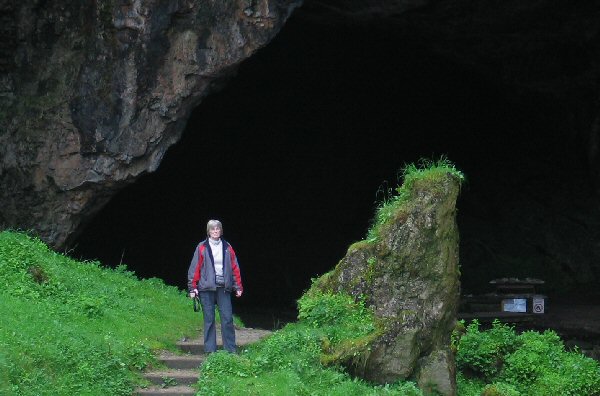Smoo Cave is located at the eastern edge of the village of Durness, on Scotland's most northerly coastline. It is a dramatic location and on the only primary road in the area, the A838 Durness to Tongue. A short walk gets you to the cave.

The name Smoo is thought to be derived from the Norse word "smjugg" meaning hole creek or cleft. This impressive sea cave has been carved into Durness limestone by successive episodes of high sea level over the past several hundred years.
The huge entrance is the largest entrance of any sea cave in the British Isles and leads into the first chamber which is more than 60 meters long and 40 meters wide. The second chamber is about 21 meters by 9 meters and can be viewed from a specially constructed platform, the third chamber is accessible only by a small boat.

Requirements for claiming this cache:
To get credit for this Earthcache please answer the following Study Questions and send us your findings. It would be great if you could share a nice picture of the area with us.
Please do not post any answers with your log.
1. Estimate the height of the huge entrance to the first chamber.
1. Schätzen Sie die Höhe des riesigen Eingangs in die erste Kammer.
1. Estimer la hauteur de la grande entrée de la première chambre.
2. There is something special in the second chamber. What is it?
2. In der zweiten Kammer gibt es etwas besonderes. Was ist es?
2. Il est quelque chose de spécial dans la deuxième chambre. Qu'Est-ce que c'est?

Smoo Cave is a very large sea cave, but the rear part is a karst cave which formed inside limestones of the Durness Group. The Durness Group are layers of limestones and dolomites. The rocks were formed during Odovician and Lower Cambrian as shelf sediments. They are found in a narrow belt running north to south, from the area of the Smoo Cave to Ardarroch at Loch Kishorn. The karst features of Smoo cave are typical for such a small limestone area with impermeable and insoluble rocks surrounding it.
Waters flowing on impermeable rock, disappear in swallow holes as soon as they reach the border to the limestone. They drain underground and reappear in karst springs and caves. Such a cave river is to be found inside Smoo cave, water from a burn which disappeared only a few meters away.
The cave is formed in a band of Durness limestone which in turn is surrounded by quartzite, gneiss and grits. Originally a small swallet cave, the entrance has been much enlarged by the action of the sea. The second chamber has been formed by the action of fresh water. The roof holes show the difference in the forces that formed the caverns.